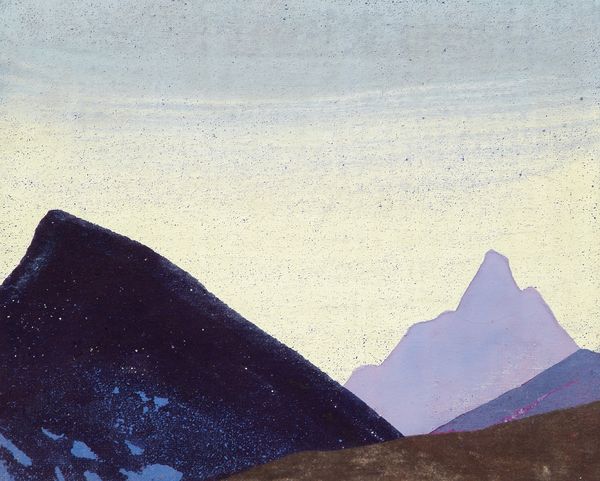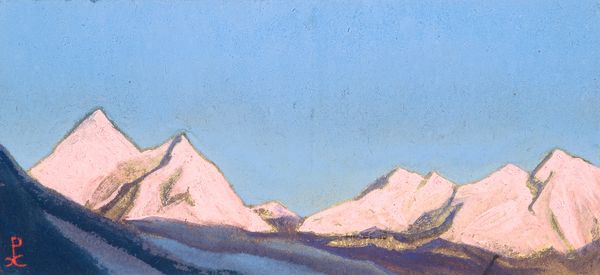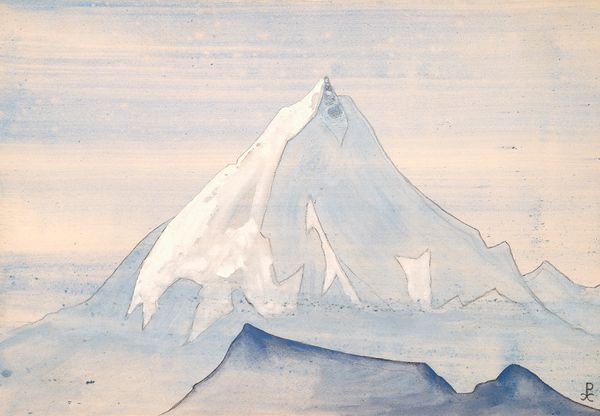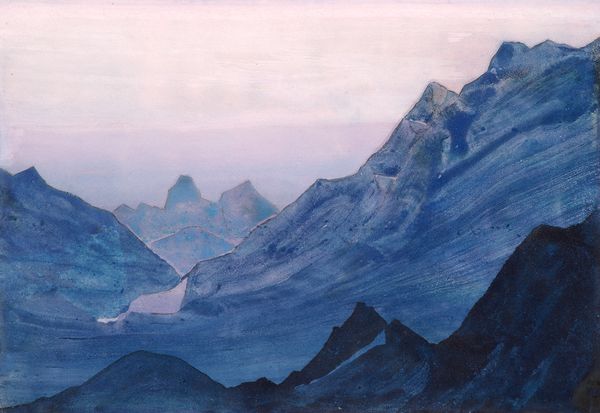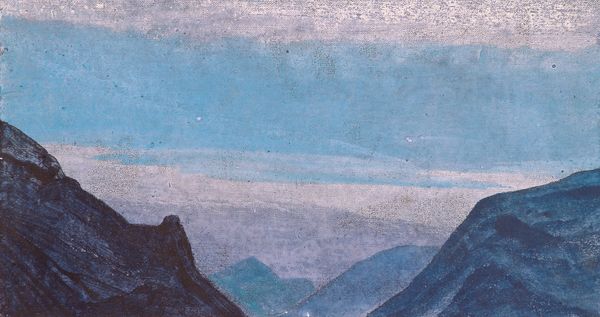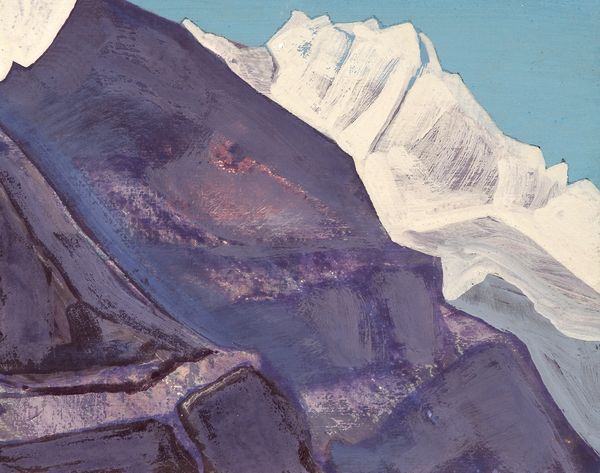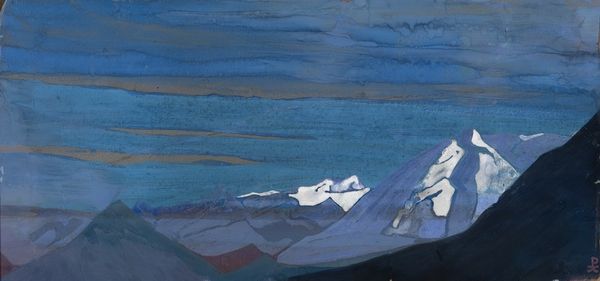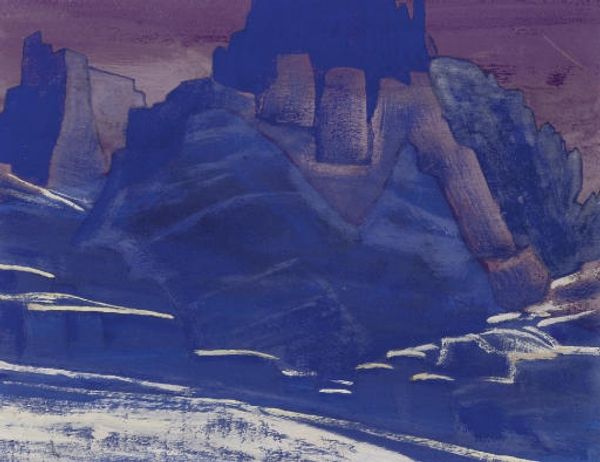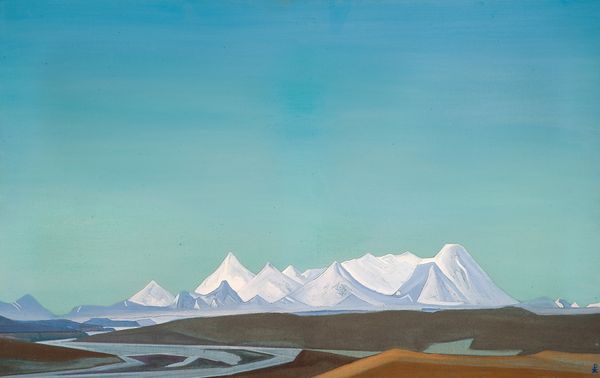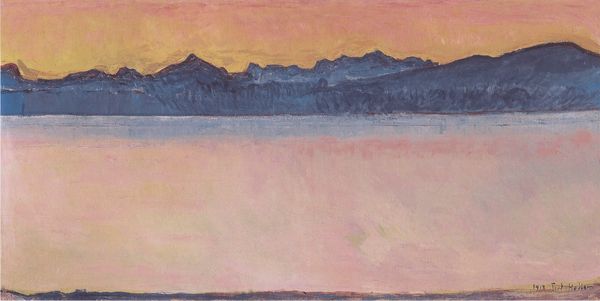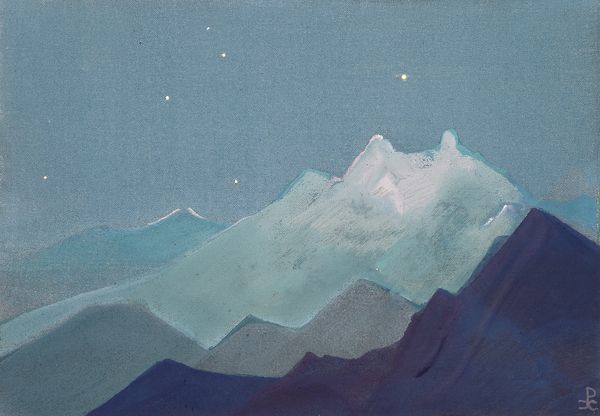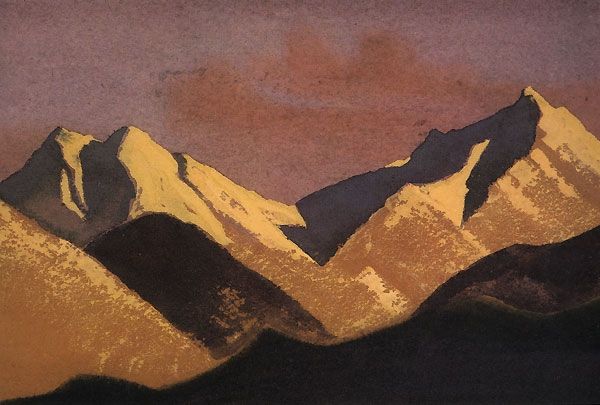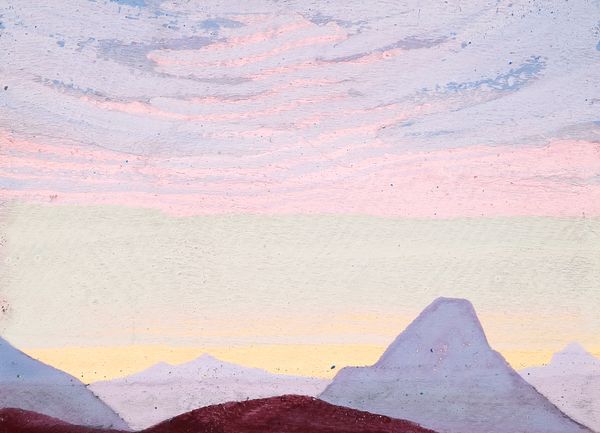
Copyright: Public domain
Editor: This is "Himalayas. Rain." painted by Nicholas Roerich in 1933, using oil paint. It strikes me as both imposing and serene; the blues are so calming, yet those mountains are formidable. What’s your take on this piece? Curator: I think the work has everything to do with Roerich’s sociopolitical position at the time. This was painted during his Central Asian expedition under the guise of scientific and artistic exploration. Editor: You’re saying this isn’t just a landscape? Curator: Landscapes are rarely "just" landscapes. Consider that Roerich was deeply involved in the Theosophical Society, interested in Eastern religions, and promoting the idea of a unified spiritual destiny for humanity. The Himalayas become a symbol, not just a place. What do they represent to you? Editor: Well, given the title, perhaps purification or cleansing with the rain? A kind of spiritual renewal reflected in the natural world? Curator: Precisely! The painting serves a public function. It attempts to elevate the viewer. But it's impossible to look at Roerich's imagery and ignore its function in service to larger ideas about cultural unity and spiritual ascendance – and the power dynamics inherent in such grand narratives. It raises crucial questions about the use of art for cultural and political purposes, doesn’t it? Editor: Absolutely. I hadn't considered how his personal beliefs and the socio-political climate would influence his artistic choices so directly. Thank you! Curator: And thank you! I’ve come to appreciate even more the power of landscape to represent a multitude of complex, interconnected ideas.
Comments
No comments
Be the first to comment and join the conversation on the ultimate creative platform.

